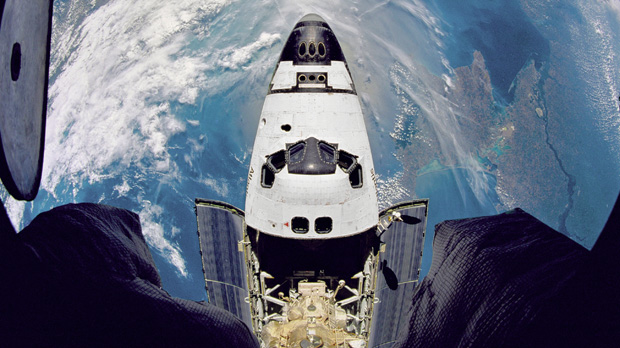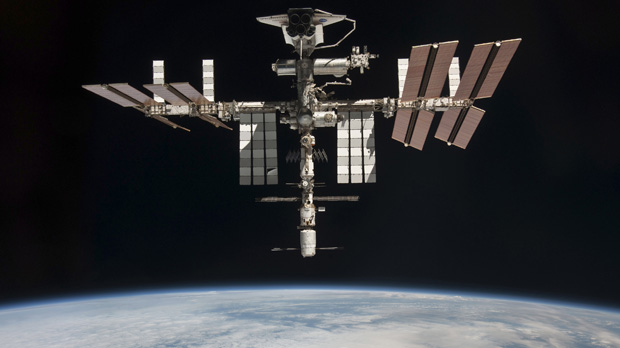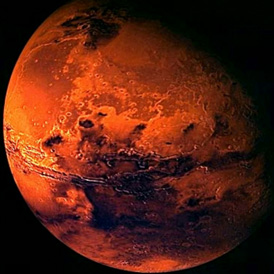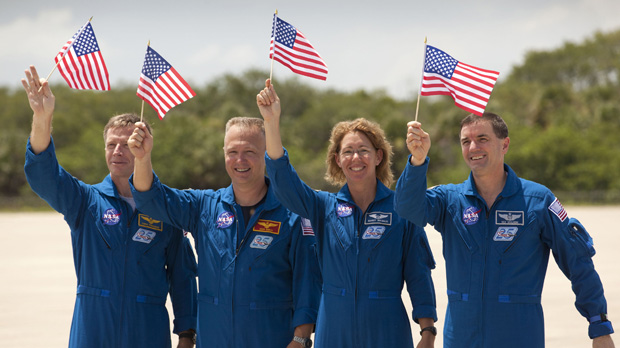Nasa space shuttle programme: a retrospective
As the Atlantis prepares for the final mission of the space shuttle programme, an astronaut, a space policy analyst and a Nasa surgeon whose wife died on the Columbia reflect on the end of an era.

Over the past three decades, the agency’s shuttles have played a crucial role in constructing the International Space Station (ISS), launching the Hubble telescope and sending astronauts and millions of tons of hardware into space.
Since Columbia’s maiden launch in April 1981, the five shuttles – Atlantis, Columbia, Challenger, Discovery and Endeavour – have completed 134 flights between them, and travelled a combined total of 537,114,016 miles (864,401,218km), spending 1,320 days in orbit.
It cost my wife’s life and my son no longer had a mother, both I feel that the loss was worth it – Dr Jonathan Clark
Discovery completed its final mission in March, Endeavour launched for the last time in April and Atlantis will be the programme’s swan song on Friday.
But in two separate tragedies, 17 years apart, Challenger and Columbia broke up, and their crews perished.
Scarcely a minute after launching for what was intended to be its 10th mission in January, 1986, key structural components of Challenger disintegrated due to a faulty seal on one of its rocket boosters, and its seven astronauts died.
And in 2003, as Columbia attempted to return home at the end of its 28th flight, its heat shield was damaged re-entering Earth’s atmosphere, resulting in the deaths of its seven-strong crew.
Both disasters brought the programme to a temporary halt, with major questions being raised about the safety of such missions. But all five shuttles achieved much in their 30-year history.
So much so that Dr Jonathan Clark, a Nasa surgeon who lost his wife Laurel when she was killed in the Columbia disaster, told Channel 4 News that the shuttle programmes’ accomplishments justified their monumental costs, both financially, and personally.
“It cost my wife’s life and my son no longer had a mother, and for me it was a truly personal cost. But despite the loss that we felt personally, both my son and I feel that the loss was worth it,” Dr Clark said.
“Think of what the early explorers had to encounter. If they had to turn back every time they lost somebody, just think of what we’d be doing now: we would be a pitiful species if we didn’t expand beyond our horizons.”
Accomplishments
The space shuttles launched (and continued to fix and upgrade) Nasa’s famous telescopes and observatories – Hubble, Chandra and Compton – and since 1998 have played a critical role in the construction of the $100bn ISS. As such, the shuttle has become synonymous with its cargo.
But in addition to these milestones, 30 years of shuttle exploration has provided scientists with a wealth of insights in a range of fields, from biology and medicine to physics and materials science.
The book of what the shuttle has brought us is very thick and covers a tremendous breadth – Astronaut Michael Barratt
“One of the most basic things we have learnt is literally how to do work in space, how to reliably fly people, keep them healthy and know how to conduct experiments,” Michael Barratt, a Nasa astronaut who flew on Discovery as recently as this year, told Channel 4 News.
“We’ve learned things about the human body that we didn’t expect… from human physiology to combustion… how a flame burns… and how materials behave. When you take gravity away, you find things you didn’t expect.”
Read more: 'Rose' galaxies captured by Hubble telescope

He added: “We’ve found out about how blood pressure is regulated, how bone is maintained, about fuels and how they burn, what’s the most efficient mix of oxygen to fuel and how best you mix those with air flow velocity.
“We have launched probes. We’ve of course built the space station, we’ve done astronomy based from the shuttle.”
He went on: “The book of what the shuttle has brought us is very thick and covers a tremendous breadth.”
Another lasting legacy of the shuttle programme will be its considerable contribution to the formation of an international space community, according to Dr Clark.
“As well as the Russian Soyuz programme, the shuttle programme did a lot to expand international cooperation… allowing many different countries, besides the ones who had space-faring capabilities, to sell space to other people in the sense that they could see the beauties of the earth from the heavens,” he said.

Shortcomings
In the early 1970s, following the Apollo missions which put man on the Moon, the shuttle programme was heralded as the next breakthrough in space exploration, with its creators suggesting it would facilitate safe, frequent and affordable visits to space.
They envisaged once-a-week flights at around $20m each. But 40 years later, at a cost of $1.6bn per flight (a staggering total estimated bill of $209bn) and a fleet which never flew more than nine missions per year, the shuttle programme has simply become untenable.
Prof John Logsdon, a space policy analyst at George Washington University in Washington DC, told Channel 4 News that while the shuttles never delivered on their designer’s promises, their limitations were born out of the misplaced notion that a massive growth in space travel was imminent.
“The people who advocated the shuttle thought that space was going to be a very busy, very growing domain of human activity in the 80s and beyond. It hasn’t quite worked out that way,” he said.

Its limitations were not just conceptual, but structural, too.
“The machine itself turns out to be very fragile, requiring extreme care to operate safely: it’s an experimental vehicle, not a routine operational vehicle. That, (combined with) the fact that there wasn’t that much demand for its service, led to a very different programme than those that advocated it had in mind.”
One of the main criticisms of the programme from space experts is that it sidetracked the next logical step for Nasa’s space exploration ambitions: manned missions to Mars.
The agency had envisaged the shuttle as the first in a four-stage process in Martian exploration. It saw the shuttle building a space station, from which regular missions to the moon could be carried out before finally using it to launch a rocket to the red planet. But the spiralling costs of its flights – 80 times the original estimate – meant that there was funding for the shuttles and little else.
Some experts look back on the space shuttle programme as a sterling success in terms of building up man’s practical knowledge of living in space.
Others regard it as a programme which almost broke Nasa and digressed from the dream of reaching Mars. But the shuttles will certainly be missed, according to our experts.
Recalling his arrival back on earth following Discovery’s final mission, Michael Barratt said: “Handing this over to the people who had cared for the ship for so many years, that’s when the emotion really started and certainly that will be magnified for the last mission, the last time that we bring a shuttle in.”
But Professor Logsdon said that Nasa’s ambitions in space were far from over. “We are going to be riding Russian taxis but we’re going to have US astronauts doing work on the space station for at least a decade to come. This is the end of one era but it’s also a transition to another one.”

-
Latest news
-
Windrush scandal: returning to the UK after a forty year wait6m

-
Netanyahu ‘survival’ depends on ‘expanding war’ says head of Palestinian National Initiative5m

-
Proposed law change could strip parental rights from paedophiles5m

-
Hugh Grant settles privacy lawsuit against The Sun newspaper publisher2m

-
Post Office Scandal: what did top executive know?6m

-




